Factores que afectan la estructura interna de las empresas familiares
Factores que afectan la estructura interna de las empresas familiares
Main Article Content
Abstract
In this article, it is presented the review carried out on the factors that affect the internal structures of family businesses. The document is part of the preliminary results of the research project called Characterization of the Most Relevant Family Businesses in Ibagué, Tolima, developed by the la Corporación Unificada Nacional de Educación Superior, CUN, through the research seedbed on Impact Family Businesses for the Tolima (Efit). Among the main findings of the research, in addition to the particularities that accompany this type of organizations, it was found that the existing mixture between, on one side, the hierarchy and organizational operation, and, on the other, the family relationships and affective ties is an endless cocktail of business networks, worthy of the interest of the scientific community.
Downloads
Article Details
References (SEE)
Álvarez, A. y Pérez, P. (2000). La empresa sustentable en una sociedad de riesgo, Revista de cien¬cias sociales y humanidades, (48), 163-182.
Betancourt, G. G., Ramírez, J. B. B., & Cuervo, N. Z. (2012). Empresas familiares multigeneracio¬nales, Entramado, 8(2), 38-49.
Chiavenato, I., Sacristán, P. y Roa, M. D. C. E. H. (2011). Administración de recursos humanos. Mc¬Graw-Hill Interamericana.
Gracia, E. y Musitu, G. (2000). Familia y psicología social: una relación sin formalizar. Revista de Psicología Social, 15(2), 137-152.
Ibarra, A. (1998). La departamentalizacion, contexto y concepto. Revista electrónica Sinéctica, (12). 1-15.
Tapies, J. (2011). Empresa familiar: un enfoque multidisciplinar. Universia Business Review, (32), 12-25.
Gallo, M., Klein, S., Montemerlo, D., Tomaselli, S. y Cappuyns, K. (2009) La empresa familiar mul¬tigeneracional. Pamplona: Universidad de Navarra.
Morris, M., Williams, R., Allen, J. y Avila, R. (1997). Correlates of Success in Family Business Transitions, Journal of Business Venturing, 12. 385-401
Reyna, J., Salcido, M. y Arredondo, A. (2013). Análisis del ciclo vital de la estructura familiar y sus principales problemas en algunas familias mexicanas. Alternativas en psicología, 17(28). 73-91.
Sharma, P. (2004). An Overview of the Field of Family Business Studies: Current Status and Di¬rections for the Future. Family Business Review, 17 (1).
Thomas, W. I. (2005). La definición de la situación. CIC. Cuadernos de Información y Comunica¬ción, (10). 27 - 32. Recuperado de https://revistas.ucm.es/index.php/CIYC/article/view/ CIYC0505110027A
Thompson, I. (2017). Tipos de organigramas. Conozca cuáles son los diferentes tipos de orga-nigramas y que características generales tiene cada uno de ellos [entrada de blog]. Recu¬perado de https://www.promonegocios.net/organigramas/tipos-de-organigramas.html
Lerner, J. (2003). ¿Qué es la familia? Determinismo - Transmisión – Tradición. Revista Universidad EAFIT, 39(130), 9-18.








